Low-Cost, Distributed Environmental Monitors for Factory Worker Health
Abstract
1. Introduction
2. Materials and Methods
2.1. Monitor Design Requirements
2.2. Selection of Sensors
2.3. Hardware Integration
2.4. Sensor Performance
2.4.1. Particulate Sensors
2.4.2. Carbon Monoxide Sensors
2.4.3. Oxidizing Gas Sensors
2.4.4. Noise Sensors
2.4.5. Gas Sensor Bias and Precision
2.5. Field Deployment
3. Results and Discussion
3.1. Particulate Sensors
3.2. Carbon Monoxide Sensors
3.3. Oxidizing Gas Sensors
3.4. Noise Sensors
3.5. Field Deployment and Samples of Preliminary Data
4. Conclusions
Author Contributions
Funding
Acknowledgments
Conflicts of Interest
References
- Attfield, M.D.; Kuempel, E.D. Mortality among U.S. underground coal miners: A 23-year follow-up. Am. J. Ind. Med. 2008, 51, 231–245. [Google Scholar] [CrossRef] [PubMed]
- Henneberger, P.K.; Attfield, M.D. Respiratory symptoms and spirometry in experienced coal miners: Effects of both distant and recent coal mine dust exposures. Am. J. Ind. Med. 1997, 32, 268–274. [Google Scholar] [CrossRef]
- Antonini, J.M. Health effects of welding. Crit. Rev. Toxicol. 2003, 33, 61–103. [Google Scholar] [CrossRef] [PubMed]
- Hart, J.E.; Eisen, E.A.; Laden, F. Occupational diesel exhaust exposure as a risk factor for COPD. Curr. Opin. Pulm. Med. 2012, 18, 151–154. [Google Scholar] [CrossRef] [PubMed]
- Lipsett, M.; Campleman, S. Occupational exposure to diesel exhaust and lung cancer: A meta-analysis. Am. J. Public Health 1999, 89, 1009–1017. [Google Scholar] [CrossRef] [PubMed]
- Li, H.; Hedmer, M.; Kåredal, M.; Björk, J.; Stockfelt, L.; Tinnerberg, H.; Albin, M.; Broberg, K. A cross-sectional study of the cardiovascular effects of welding fumes. PLoS ONE 2015, 10, e0131648. [Google Scholar] [CrossRef] [PubMed]
- Sørensen, A.R.; Thulstrup, A.M.; Hansen, J.; Ramlau-Hansen, C.H.; Meersohn, A.; Skytthe, A.; Bonde, J.P. Risk of lung cancer according to mild steel and stainless steel welding. Scand. J. Work Environ. Health 2007, 379–386. [Google Scholar] [CrossRef]
- Racette, B.A.; Nielsen, S.S.; Criswell, S.R.; Sheppard, L.; Seixas, N.S.; Warden, M.N.; Checkoway, H. Dose-dependent progression of parkinsonism in manganese-exposed welders. Neurology 2017, 88, 344–351. [Google Scholar] [CrossRef] [PubMed]
- Sriram, K.; Jefferson, A.M.; Lin, G.X.; Afshari, A.A.; Zeidler-Erdely, P.C.; Meighan, T.G.; McKinney, W.; Jackson, M.; Cumpston, A.M.; Cumpston, J.L.; et al. Neurotoxicity following acute inhalation of aerosols generated during resistance spot weld-bonding of carbon steel. Inhal. Toxicol. 2014, 26, 720–732. [Google Scholar] [CrossRef] [PubMed][Green Version]
- Greer, J.R.; Abbey, D.E.; Burchette, R.J. Asthma related to occupational and ambient air pollutants in nonsmokers. J. Occup. Environ. Med. 1993, 35, 909–915. [Google Scholar] [CrossRef]
- Popović, O.; Prokić-Cvetković, R.; Burzić, M.; Lukić, U.; Beljić, B. Fume and gas emission during arc welding: Hazards and recommendation. Renew. Sustain. Energy Rev. 2014, 37, 509–516. [Google Scholar] [CrossRef]
- Bornholdt, J.; Dybdahl, M.; Vogel, U.; Hansen, M.; Loft, S.; Wallin, H. Inhalation of ozone induces DNA strand breaks and inflammation in mice. Mutat. Res. Gen. Toxicol. Environ. 2002, 520, 63–72. [Google Scholar] [CrossRef]
- Kao, L.W.; Nañagas, K.A. Carbon monoxide poisoning. Emerg. Med. Clin. N. Am. 2005, 22, 985–1018. [Google Scholar] [CrossRef] [PubMed]
- Nelson, D.I.; Concha-Barrientos, M.; Driscoll, T.; Steenland, K.; Fingerhut, M.; Punnett, L.; Prüss-Ustün, A.; Leigh, J.; Corvalan, C. The global burden of selected occupational diseases and injury risks: Methodology and summary. Am. J. Ind. Med. 2005, 48, 400–418. [Google Scholar] [CrossRef] [PubMed]
- Occupational Safety and Health Administration. 2006; Table Z-1 Limits for Air Contaminants. 29 CFR 1910.1000 Table Z-1. Available online: https://www.osha.gov/pls/oshaweb/owadisp.show_document?p_table=STANDARDS&p_id=9992&p_text_version=FALSE (accessed on 1 December 2017).
- Monn, C. Exposure assessment of air pollutants: A review on spatial heterogeneity and indoor/outdoor/personal exposure to suspended particulate matter, nitrogen dioxide and ozone. Atmos. Environ. 2001, 35, 1–32. [Google Scholar] [CrossRef]
- Hewett, P. Misinterpretation and misuse of exposure limits. Appl. Occup. Environ. Hyg. 2001, 16, 251–256. [Google Scholar] [CrossRef] [PubMed]
- Tornero-Velez, R.; Symanski, E.; Kromhout, H.; Yu, R.C.; Rappaport, S.M. Compliance versus risk in assessing occupational exposures. Risk Anal. 1997, 17, 279–292. [Google Scholar] [CrossRef] [PubMed]
- Cherrie, J. Commentary: The beginning of the science underpinning occupational hygiene. Ann. Occup. Hyg. 2003, 47, 179–185. [Google Scholar] [CrossRef] [PubMed]
- Rezagholi, M.; Mathiassen, S.E. Cost-efficient design of occupational exposure assessment strategies—A review. Ann. Occup. Hyg. 2010, 54, 858–868. [Google Scholar] [CrossRef] [PubMed]
- Jo, B.W.; Khan, R.M.A. An event reporting and early-warning safety system based on the internet of things for underground coal mines: A case study. Appl. Sci. 2017, 7, 925. [Google Scholar] [CrossRef]
- Jaladi, A.R.; Khithani, K.; Pawar, P.; Malvi, K.; Sahoo, G. Environmental monitoring using wireless sensor networks (WSN) based on IOT. Int. Res. J. Eng. Technol. 2017, 4, 1371–1378. [Google Scholar] [CrossRef]
- Yang, J.; Zhou, J.; Lv, Z.; Wei, W.; Song, H. A real-time monitoring system of industry carbon monoxide based on wireless sensor networks. Sensors 2015, 15, 29535–29546. [Google Scholar] [CrossRef] [PubMed]
- Hodge, V.J.; O’Keefe, S.; Weeks, M.; Moulds, A. Wireless sensor networks for condition monitoring in the railway industry: A survey. IEEE Trans. Intell Transp. Syst. 2015, 16, 1088–1106. [Google Scholar] [CrossRef]
- Hernandez Bennetts, V.; Schaffernicht, E.; Lilienthal, A.J.; Fan, H.; Kucner, T.P.; Andersson, L.; Johansson, A. Towards occupational health improvement in foundries through dense dust and pollution monitoring using a complementary approach with mobile and stationary sensing nodes. In Proceedings of the IEEE/RSJ International Conference on Intelligent Robots and Systems, Daejeon, Korea, 9–14 October 2016; 2016; pp. 131–134. [Google Scholar] [CrossRef]
- Budde, M.; Busse, M.; Beigl, M. Investigating the use of commodity dust sensors for the embedded measurement of particulate matter. In Proceedings of the Ninth International Conference on Networked Sensing Systems (INSS), Antwerp, Belgium, 11–14 June 2012. [Google Scholar] [CrossRef]
- Jovanovic, U.Z.; Jovanovic, I.D.; Petrušic, A.Z.; Petrušic, Z.M.; Mancic, D.D. Low-cost wireless dust monitoring system. In Proceedings of the 11th International Conference on Telecommunications in Modern Satellite, Cable and Broadcasting Services (TELSIKS), Nis, Serbia, 16–19 October 2013; pp. 635–638. [Google Scholar] [CrossRef]
- SHARP Corporation. Compact Optical Dust Sensor. Available online: http://www.datasheetlib.com/datasheet/684259/gp2y1010au0f_sharp-electrionic-components.html (accessed on 26 April 2018).
- Zakaria, N.S.; Abdullah, J.; Yusof, A.M.; Azizan, M.M.; Kimpol, N. A study of rice husk total suspended particles (TSP) level using optical sensor in a rice mill factory. Int. J. Eng. Power Eng. Res. 2014, 2, 29–33. [Google Scholar]
- Khadem, M.I.; Sgârciu, V. Smart sensor nodes for airborne particulate concentration detection. UPB. Sci. Bull. Ser. C 2014, 76, 3–12. [Google Scholar]
- Qian, C.G.; Cai, W.Y. The design and implementation of video wireless WIFI sensor nodes with the function of air targets detection. In Proceedings of the 2014 International Conference on Wireless Communication and Sensor Network, Wuhan, China, 16 December 2014; pp. 222–225. [Google Scholar]
- Yang, Q.; Zhou, G.; Qin, W.; Zhang, B.; Chiang, P.Y. Air-kare: A Wi-Fi based, multi-sensor, real-time indoor air quality monitor. In Proceedings of the 2015 IEEE International Wireless Symposium (IWS 2015), Shenzhen, China, 30 March–1 April 2015; pp. 1–4. [Google Scholar]
- Agnihotri, R.B.; Pandey, N.; Verma, S. Preservation of QoS and Energy Consumption-Based Performance Metrics Routing Protocols in Wireless Sensor Networks. In Quality, IT and Business Operations; Springer: Singapore, 2018; pp. 313–321. [Google Scholar]
- Agrawal, D.P. Sensor Node Coverage and Connectivity for Random Deployment. In Embedded Sensor Systems; Springer: Singapore, 2017; pp. 197–208. [Google Scholar]
- Kandris, D.; Tselikis, G.; Anastasiadis, E.; Panaousis, E.; Dagiuklas, T. COALA: A Protocol for the Avoidance and Alleviation of Congestion in Wireless Sensor Networks. Sensors 2017, 17, 2502. [Google Scholar] [CrossRef] [PubMed]
- Leu, J.S.; Chiang, T.H.; Yu, M.C.; Su, K.W. Energy efficient clustering scheme for prolonging the lifetime of wireless sensor network with isolated nodes. IEEE Commun. Lett. 2015, 19, 259–262. [Google Scholar] [CrossRef]
- Sousan, S.; Koehler, K.; Thomas, G.; Park, J.H.; Hillman, M.; Halterman, A.; Peters, T.M. Inter-comparison of low-cost sensors for measuring the mass concentration of occupational aerosols. Aerosol Sci. Technol. 2016, 50, 462–473. [Google Scholar] [CrossRef] [PubMed]
- Hallett, L.; Tatum, M.; Thomas, G.; Sousan, S.; Koehler, K.; Peters, T. An inexpensive sensor for noise. J. Occup. Environ. Hyg. 2018. [Google Scholar] [CrossRef] [PubMed]
- Sousan, S.; Koehler, K.; Hallett, L.; Peters, T.M. Evaluation of consumer monitors to measure particulate matter. J. Aerosol Sci. 2017, 107, 123–133. [Google Scholar] [CrossRef] [PubMed]
- Afshar-Mohajer, N.; Zuidema, C.; Sousan, S.; Hallett, L.; Tatum, M.; Rule, A.M.; Thomas, G.; Peters, T.; Koehler, K. Evaluation of low-cost electro-chemical sensors for environmental monitoring of ozone, nitrogen dioxide and carbon monoxide. J. Occup. Environ. Hyg. 2018. [Google Scholar] [CrossRef] [PubMed]
- Spinelle, L.; Gerboles, M.; Aleixandre, M. Performance evaluation of amperometric sensors for the monitoring of O3 and NO2 in ambient air at ppb level. Procedia Eng. 2015, 120, 480–483. [Google Scholar] [CrossRef]
- Hossain, M.; Saffell, J.; Baron, R. Differentiating NO2 and O3 at low cost air quality amperometric gas sensors. ACS Sens. 2016, 1, 1291–1294. [Google Scholar] [CrossRef]
- Kardous, C.A.; Shaw, P.B. Evaluation of smartphone sound measurement applications. J. Acoust. Soc. Am. 2014, 135, EL186–EL192. [Google Scholar] [CrossRef] [PubMed]
- Occupational Safety and Health Administration. OSHA Technical Manual, Section III, Chapter 5. Available online: https://www.osha.gov/dts/osta/otm/new_noise/ (accessed on 26 April 2018).
- EPA. 40 CFR Parts 58-Ambient Air Quality Surveillance (Subchapter C); Environmental Protection Agency: Washington, DC, USA, 2016.
- NIOSH. Components for Evaluation of Direct-Reading Monitors for Gases and Vapors; DHHS (NIOSH) Publication No. 2012-162; National Institute for Occupational Safety and Health: Cincinnati, OH, USA, 2012.
- Berman, J.D.; Peters, T.M.; Koehler, K.A. Optimizing a sensor network with data from hazard mapping demonstrated in a heavy-vehicle manufacturing facility. Ann. Work Exp. Health 2018. [Google Scholar] [CrossRef] [PubMed]
- Koehler, K.A.; Volckens, J. Prospects and pitfalls of occupational hazard mapping: ‘Between these lines there be dragons’. Ann. Occup. Hyg. 2011, 55, 829–840. [Google Scholar] [CrossRef] [PubMed]
- Koehler, K.A.; Peters, T.M. Influence of analysis methods on interpretation of hazard maps. Ann. Occup. Hyg. 2012, 57, 558–570. [Google Scholar] [CrossRef] [PubMed]
- O’Brien, D.M. Aerosol mapping of a facility with multiple cases of hypersensitivity pneumonitis: Demonstration of mist reduction and a possible dose/response relationship. Appl. Occup. Environ. Hyg. 2003, 18, 947–952. [Google Scholar] [CrossRef] [PubMed]
- Peters, T.M.; Heitbrink, W.A.; Evans, D.E.; Slavin, T.J.; Maynard, A.D. The mapping of fine and ultrafine particle concentrations in an engine machining and assembly facility. Ann. Occup. Hyg. 2005, 50, 249–257. [Google Scholar] [CrossRef] [PubMed]
- Zuidema, C.; Sousan, S.; Stebounova, L.V.; Gray, A.; Liu, X.; Tatum, M.; Stroh, O.; Thomas, G.; Peters, T.; Koehler, K. Mapping occupational hazards with a multi-sensor network in a heavy-vehicle manufacturing facility. Ann. Work Exp. Health 2018, in press. [Google Scholar]
- Sousan, S.; Gray, A.; Zuidema, C.; Stebounova, L.; Thomas, G.W.; Koehler, K.; Peters, T.M. Sensor Selection to Improve Estimates of Particulate Matter Concentrations from a Low-Cost Network. Unpublished work. 2018. [Google Scholar]
- National Institute for Occupational Safety and Health. Criteria for a Recommended Standard: Occupational Exposure to Carbon Monoxide; National Institute for Occupational Safety and Health: Washington, DC, USA, 1972.
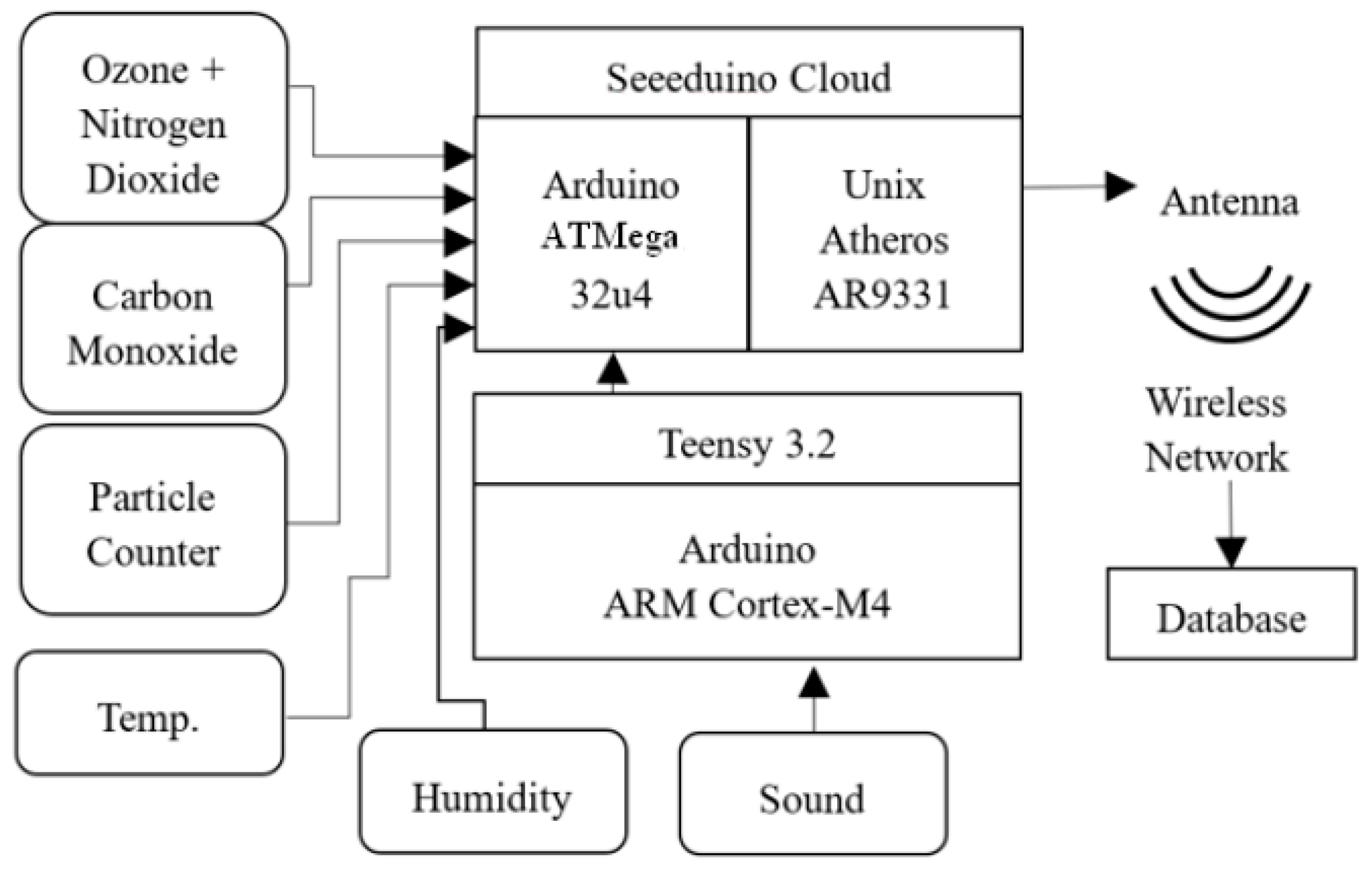
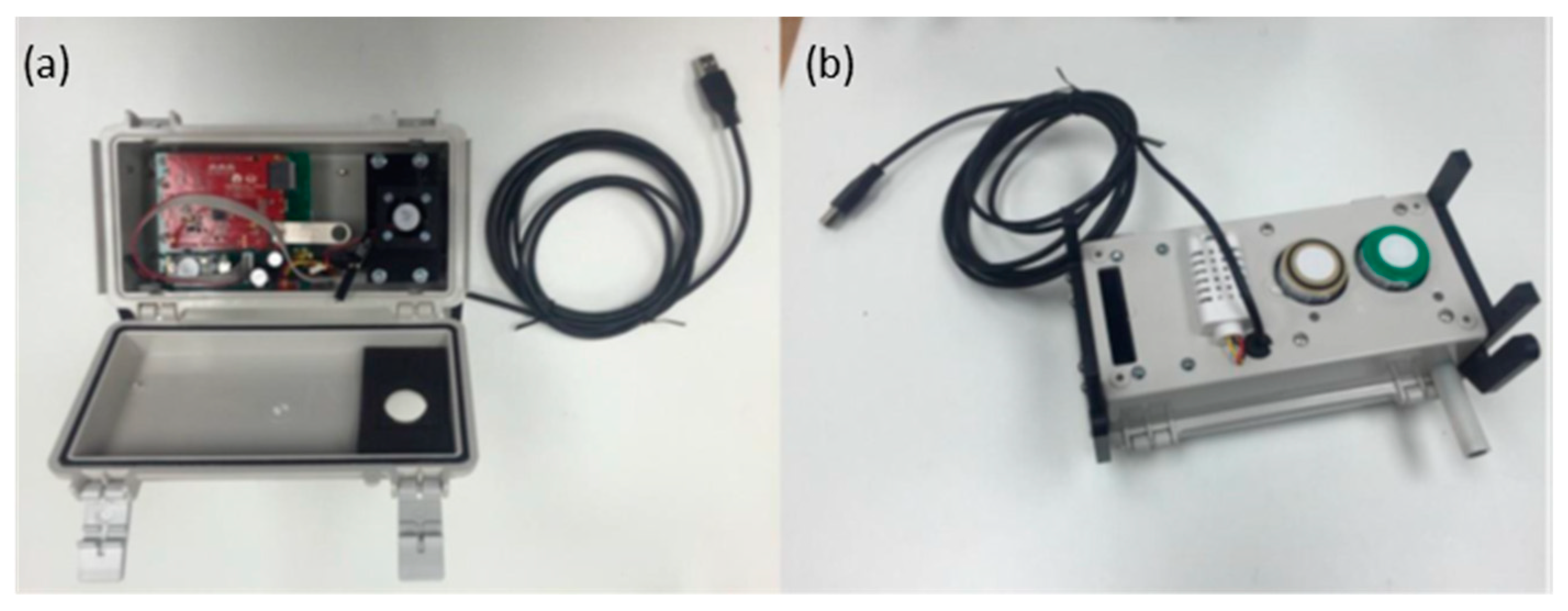
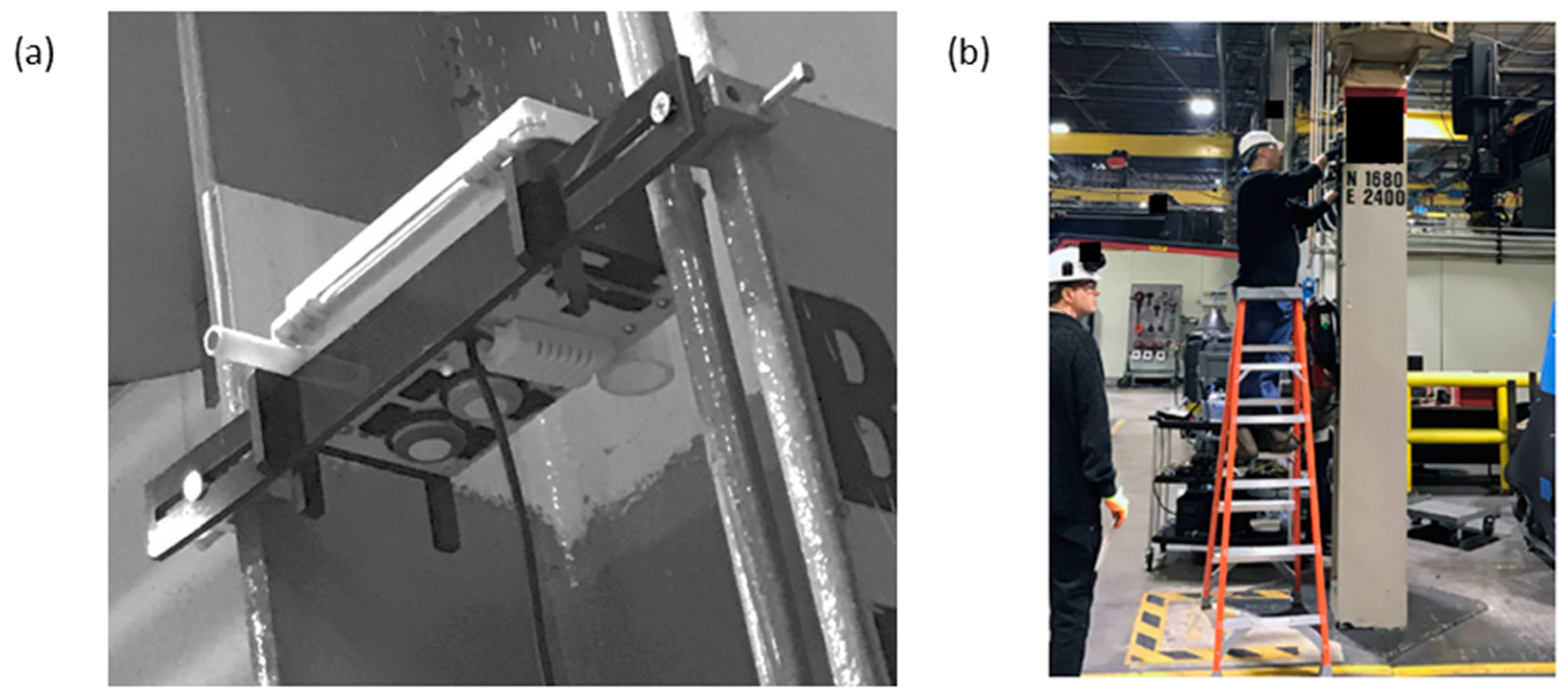
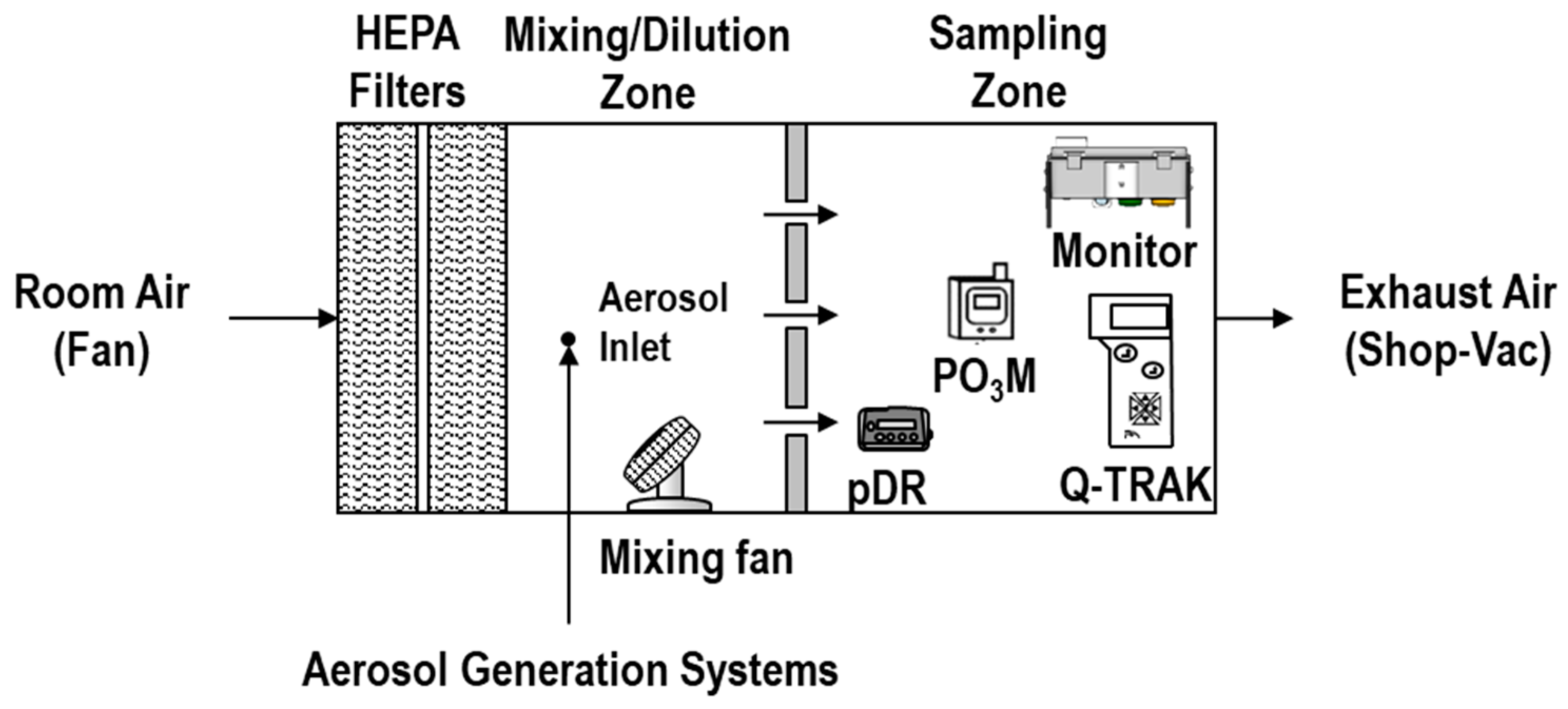
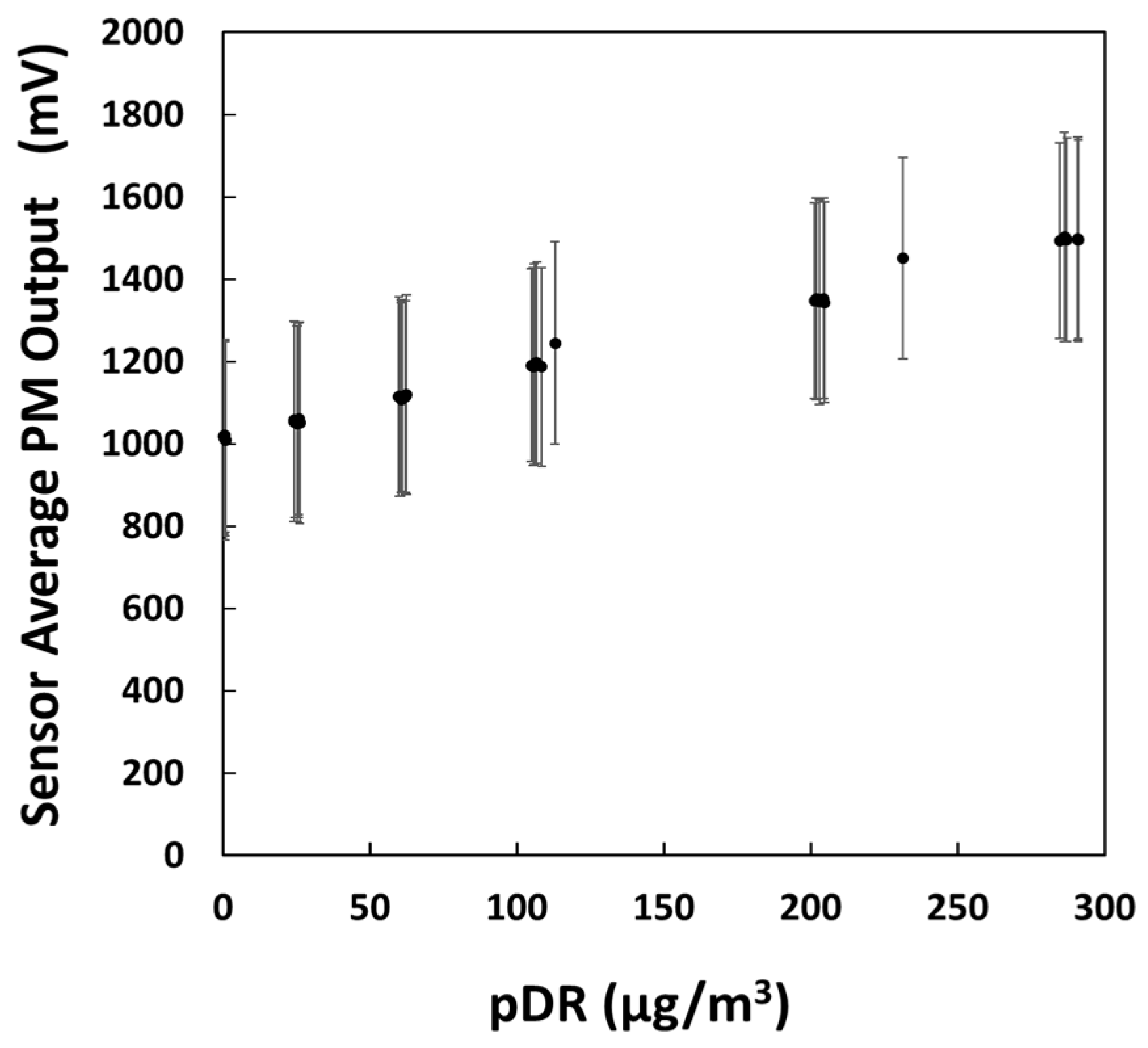
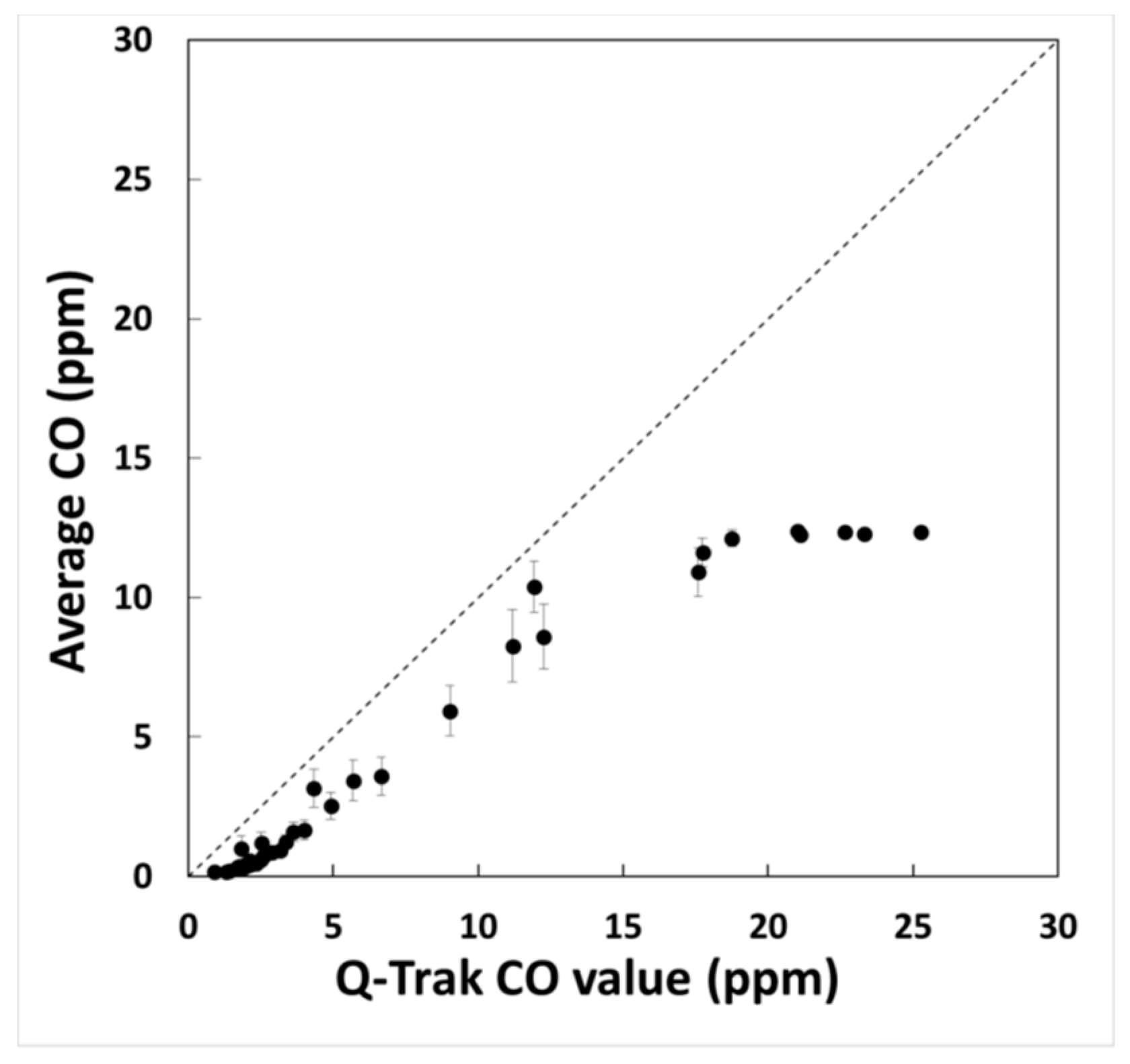
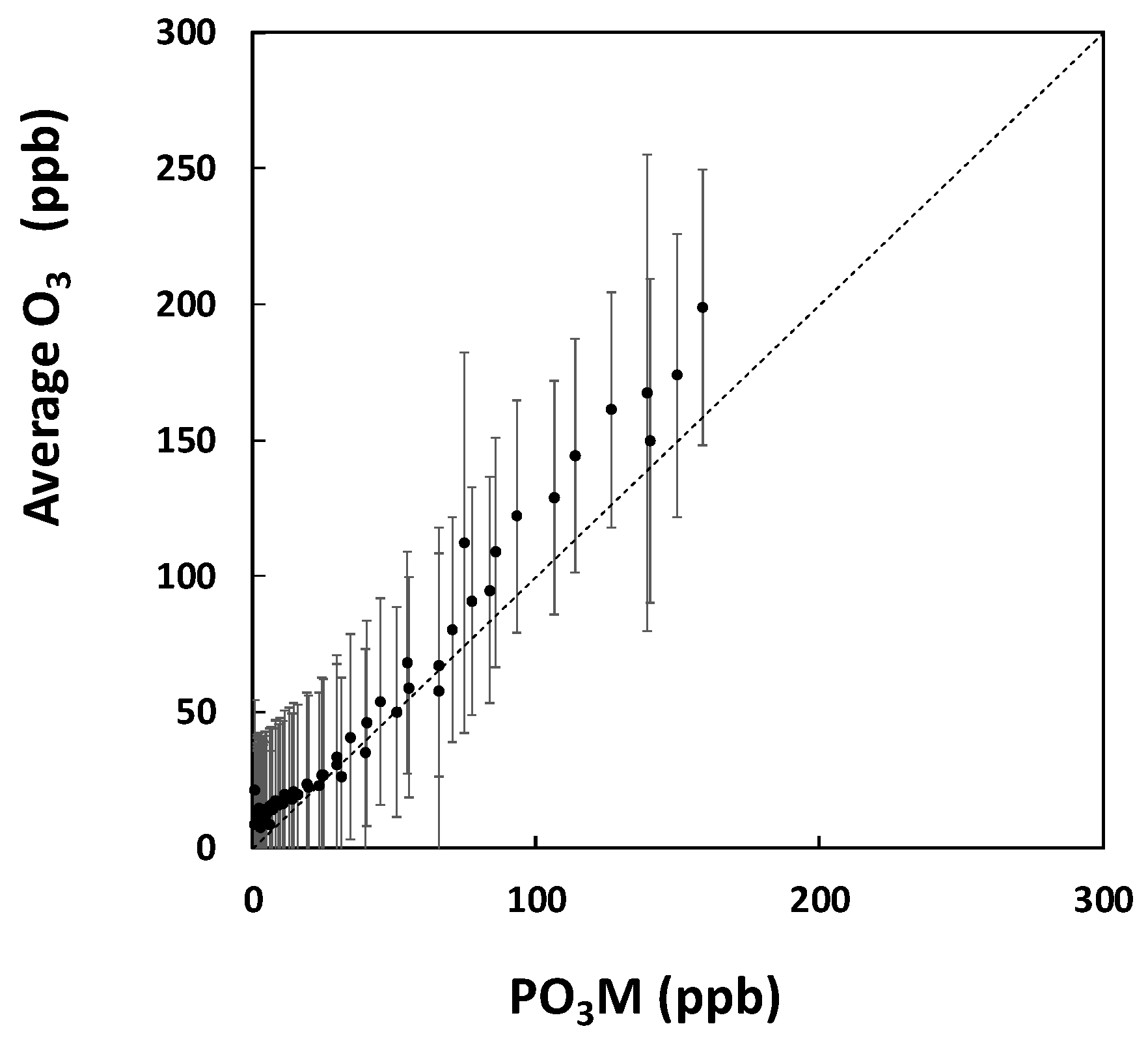
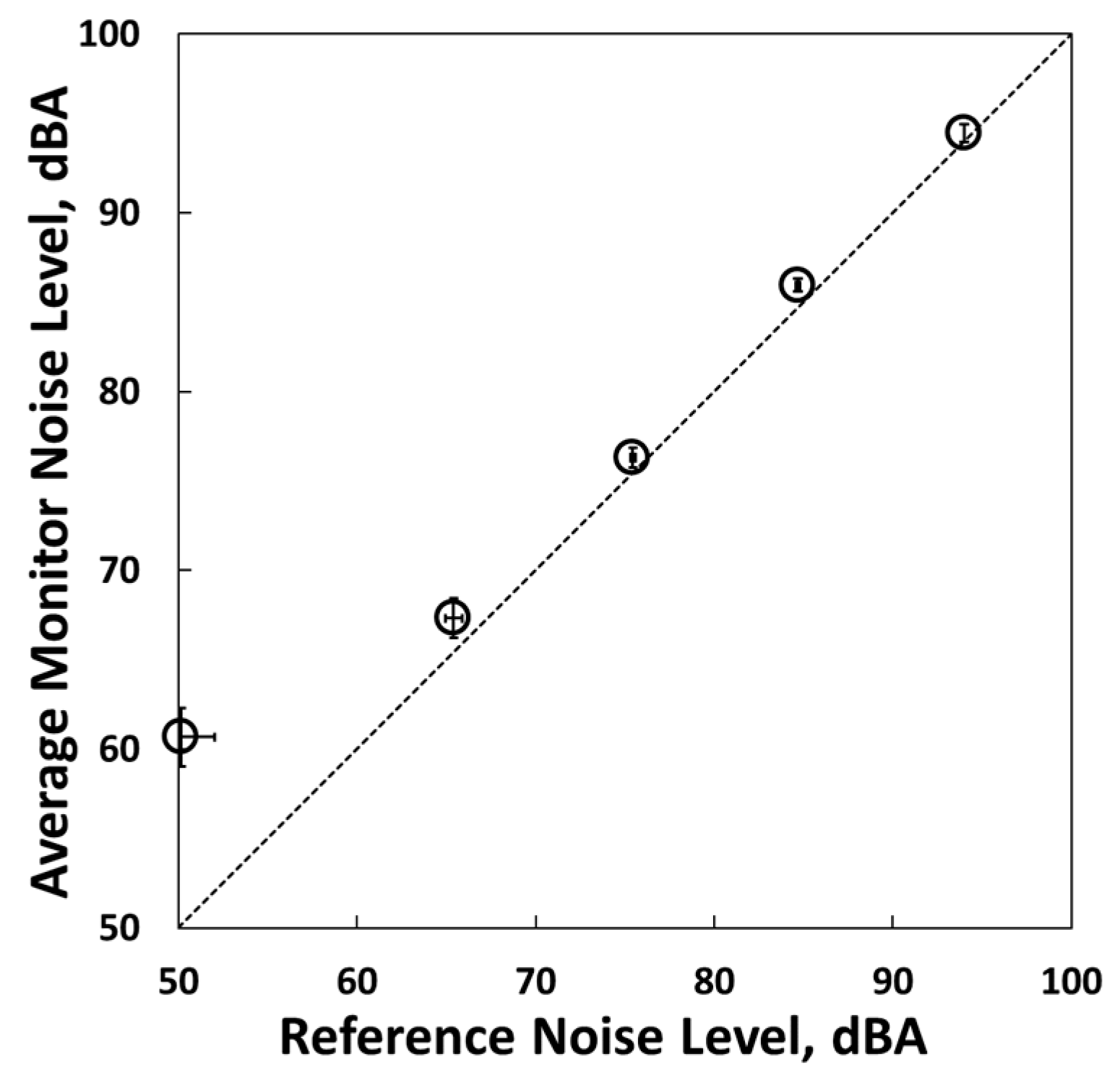
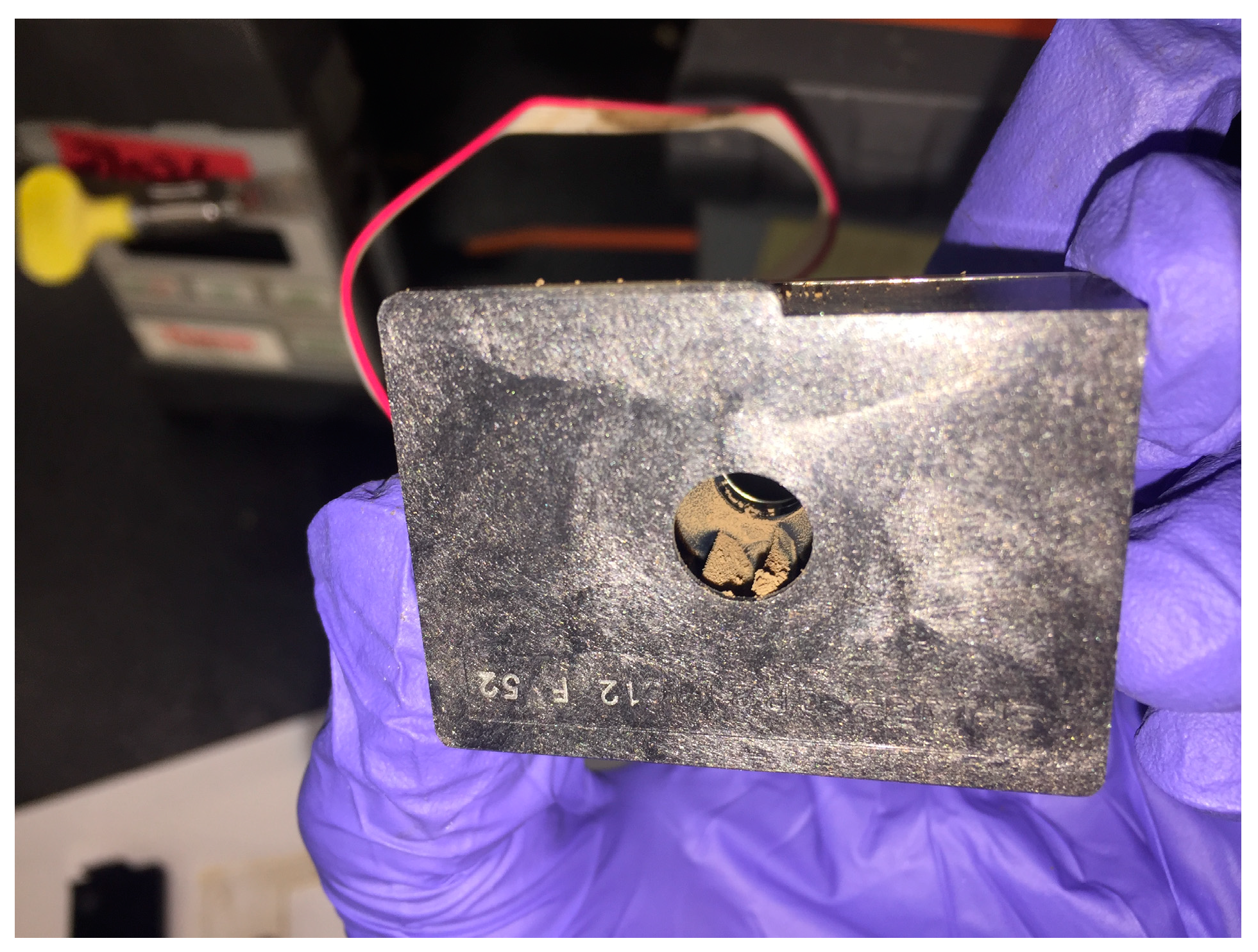

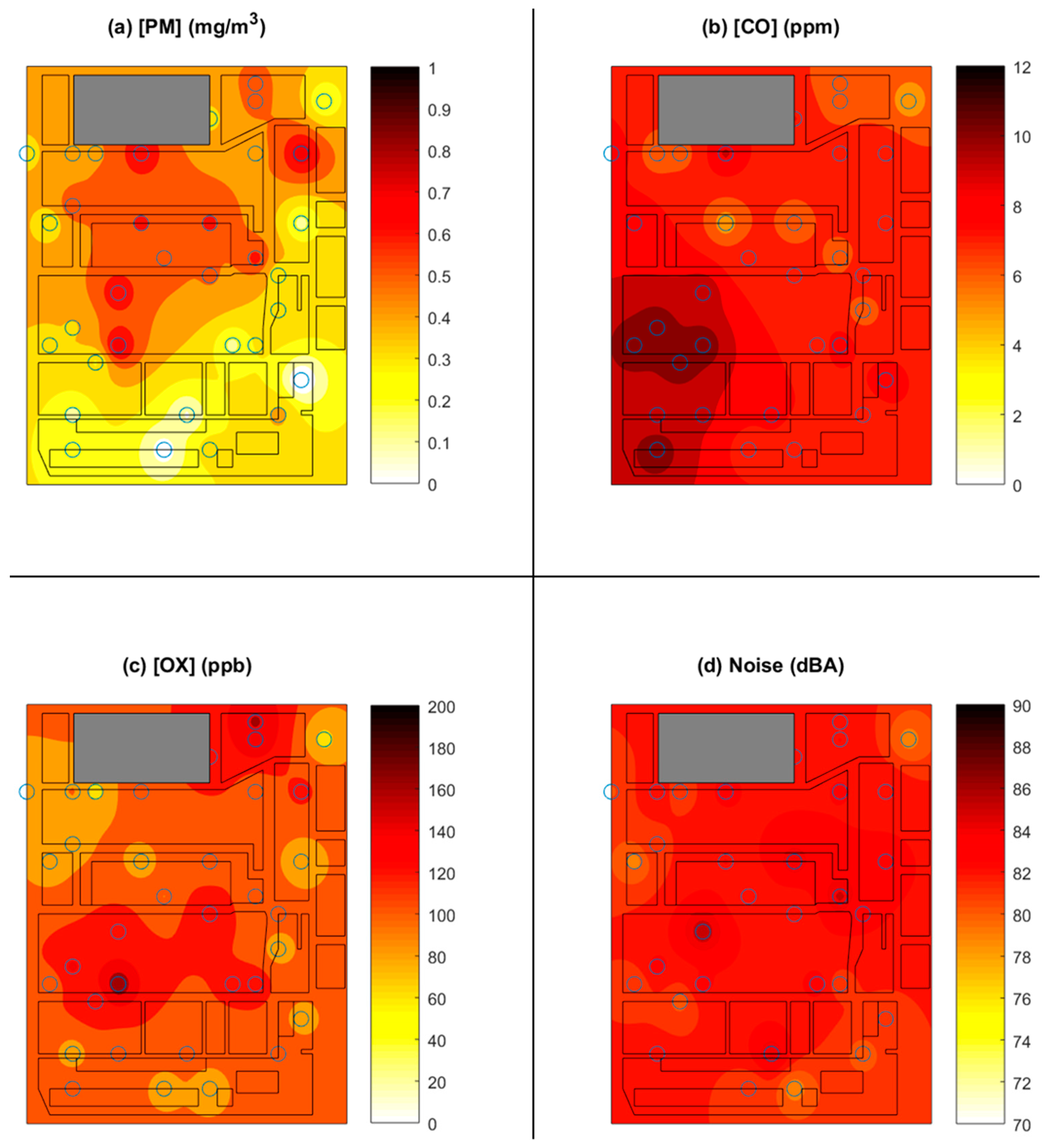
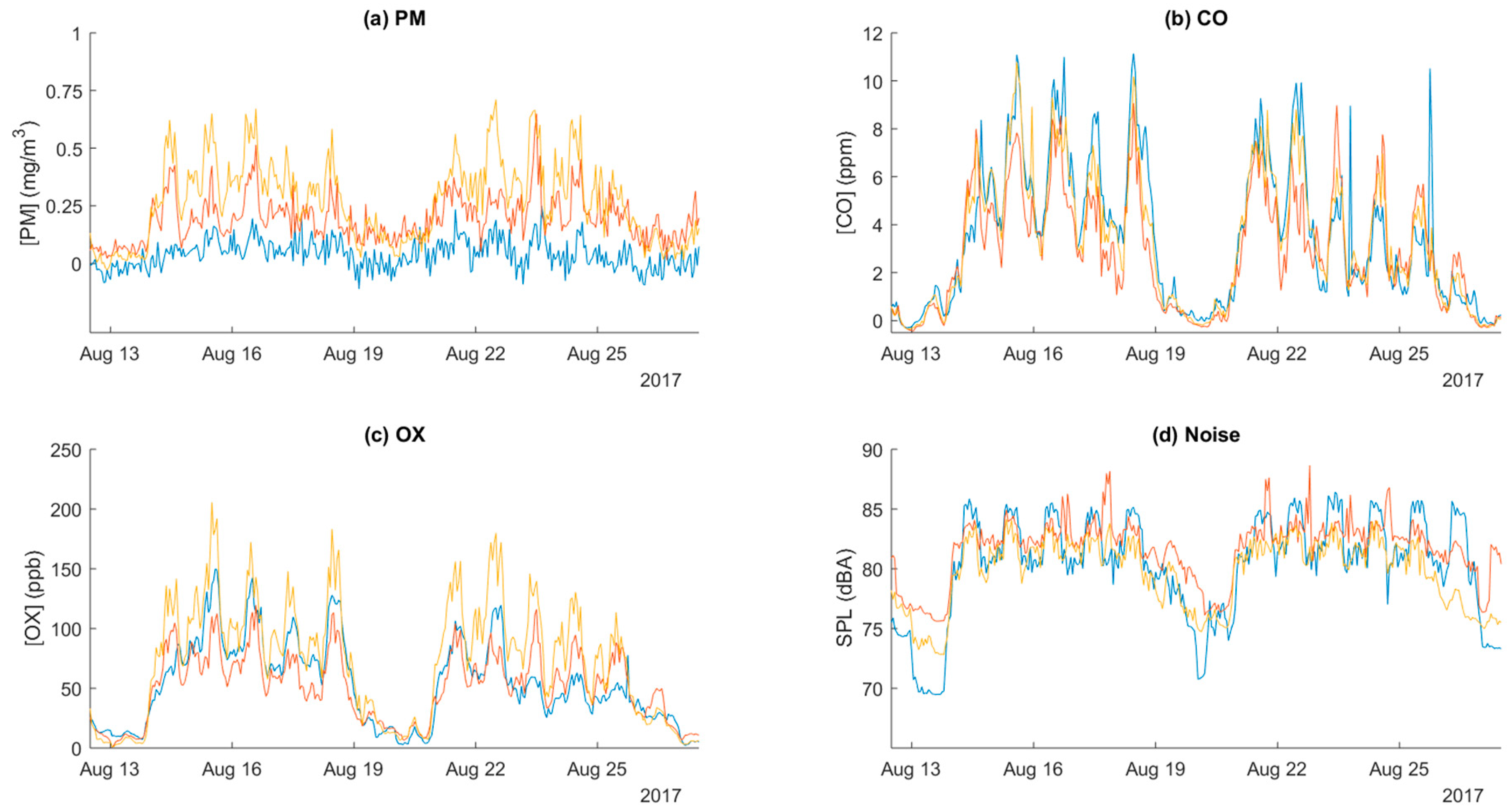
© 2018 by the authors. Licensee MDPI, Basel, Switzerland. This article is an open access article distributed under the terms and conditions of the Creative Commons Attribution (CC BY) license (http://creativecommons.org/licenses/by/4.0/).
Share and Cite
Thomas, G.W.; Sousan, S.; Tatum, M.; Liu, X.; Zuidema, C.; Fitzpatrick, M.; Koehler, K.A.; Peters, T.M. Low-Cost, Distributed Environmental Monitors for Factory Worker Health. Sensors 2018, 18, 1411. https://doi.org/10.3390/s18051411
Thomas GW, Sousan S, Tatum M, Liu X, Zuidema C, Fitzpatrick M, Koehler KA, Peters TM. Low-Cost, Distributed Environmental Monitors for Factory Worker Health. Sensors. 2018; 18(5):1411. https://doi.org/10.3390/s18051411
Chicago/Turabian StyleThomas, Geb W., Sinan Sousan, Marcus Tatum, Xiaoxing Liu, Christopher Zuidema, Mitchell Fitzpatrick, Kirsten A. Koehler, and Thomas M. Peters. 2018. "Low-Cost, Distributed Environmental Monitors for Factory Worker Health" Sensors 18, no. 5: 1411. https://doi.org/10.3390/s18051411
APA StyleThomas, G. W., Sousan, S., Tatum, M., Liu, X., Zuidema, C., Fitzpatrick, M., Koehler, K. A., & Peters, T. M. (2018). Low-Cost, Distributed Environmental Monitors for Factory Worker Health. Sensors, 18(5), 1411. https://doi.org/10.3390/s18051411





